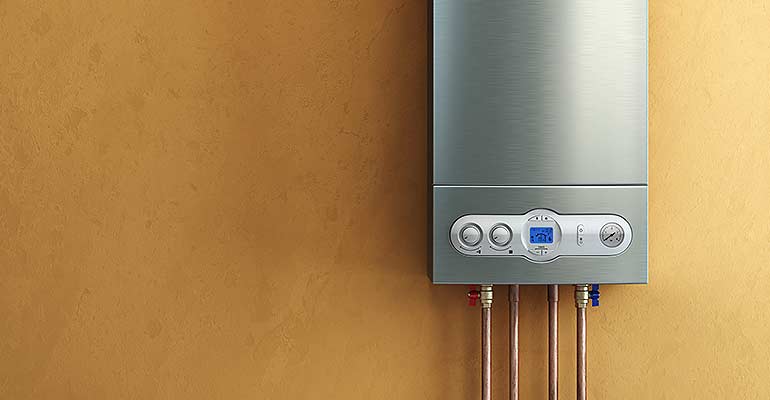Ways to Effectively Maintain Your Home's Hot Water System
Ways to Effectively Maintain Your Home's Hot Water System
Blog Article
We have discovered this article on What Kind of Maintenance Do Water Heaters Need? listed below on the web and felt it made sense to talk about it with you in this article.

Warm water is necessary for everyday convenience, whether it's for a refreshing shower or washing dishes. To ensure your hot water system runs effectively and lasts longer, routine upkeep is crucial. This short article gives sensible tips and insights on just how to keep your home's hot water system to prevent interruptions and expensive repair work.
Intro
Preserving your home's hot water system could appear challenging, but with a few basic steps, you can ensure it operates smoothly for many years to find. This overview covers whatever from understanding your hot water system to do it yourself upkeep tips and knowing when to employ specialist help.
Relevance of Preserving Your Warm Water System
Regular upkeep not only prolongs the life-span of your hot water system but additionally ensures it operates effectively. Overlooking maintenance can lead to reduced performance, higher power expenses, and even premature failing of the system.
Indicators Your Warm Water System Requirements Maintenance
Knowing when your warm water system requires attention can prevent significant problems. Watch out for indicators such as irregular water temperature level, unusual noises from the heater, or corroded water.
Recognizing Your Warm Water System
Prior to diving right into upkeep jobs, it's valuable to comprehend the fundamental elements of your hot water system. Commonly, this includes the water heater itself, pipes, anode poles, and temperature level controls.
Month-to-month Upkeep Tasks
Routine monthly checks can assist catch minor issues prior to they rise.
Purging the Water Heater
Flushing your water heater gets rid of debris accumulation, improving efficiency and prolonging its life.
Checking and Changing Anode Rods
Anode poles stop rust inside the tank. Inspecting and replacing them when worn out is crucial.
Evaluating and Changing Temperature Setups
Readjusting the temperature settings makes certain ideal performance and security.
Do It Yourself Tips for Maintenance
You can perform numerous maintenance jobs on your own to keep your warm water system in top condition.
Looking for Leaks
Routinely check pipes and links for leaks, as these can bring about water damage and higher costs.
Testing Pressure Alleviation Valves
Testing the pressure safety valve ensures it works appropriately and prevents extreme stress build-up.
Insulating Pipelines
Shielding hot water pipes minimizes warmth loss and can save energy.
When to Call an Expert
While do it yourself maintenance is useful, some concerns need specialist proficiency.
Complicated Problems Calling For Specialist Help
Examples include significant leakages, electric problems, or if your water heater is constantly underperforming.
Routine Expert Upkeep Perks
Specialist upkeep can consist of comprehensive inspections, tune-ups, and making sure conformity with safety and security standards.
Conclusion
Normal upkeep of your home's warm water system is vital for efficiency, long life, and expense savings. By following these tips and recognizing when to look for expert help, you can make certain a trusted supply of warm water without unforeseen disruptions.
How to Maintain an Instant Hot Water Heater
Before tinkering with your hot water heater, make sure that it’s not powered on. You also have to turn off the main circuit breaker and shut off the main gas line to prevent accidents. Also turn off the water valves connected to your unit to prevent water from flowing into and out of the appliance. 2. When you’re done, you have to detach the purge valves’ caps. These look like the letter “T†and are situated on either side of the water valves. Doing so will release any pressure that has accumulated inside the valves while at the same time avoid hot water from shooting out and burning your skin. 3. When the purge valves’ caps are removed, you have to connect your hosing lines to the valves. Your unit should have come with three hoses but if it didn’t, you can purchase these things from any hardware or home repair shops. You can also get them from retail stores that sell water heating systems. Read the user’s manual and follow it to complete this task properly. When the hosing lines are connected, open the purge port’s valves. 4. You should never use harsh chemical cleaners or solutions when cleaning your unit. Make use of white vinegar instead. It should be undiluted and you’ll probably use about 2 gallons. 5. Now flush your water heater. This task should probably take about 40 minutes. We can’t give you specific directions for this because the procedure is carried out depending on the type, model and brand of your heater. With that being said, refer to the user’s manual. 6. When you’re done draining the unit, you have to turn off the purge port valves again. Remove the hosing lines that you earlier installed on each of the water valves. Put the valve caps (purge port) back in their respective places and be very careful so as not to damage the rubber discs that are found inside these caps. 7. Now that everything’s back in place, check your user’s manual again to find out how to reactivate your water heating system. 8. Once it is working, turn one of your hot water faucets on just to let air pass through the heater’s water supply pipes. Leave the tap on until water flows smoothly out of it. https://www.orrplumbing.com/blog/2014/september/how-to-maintain-an-instant-hot-water-heater/

As a reader on Tips on Maintaining a Water Heater, I figured sharing that section was essential. Loved our entry? Please quickly share it. Let other people discover it. Thank you so much for going through it.
Visit Page Report this page